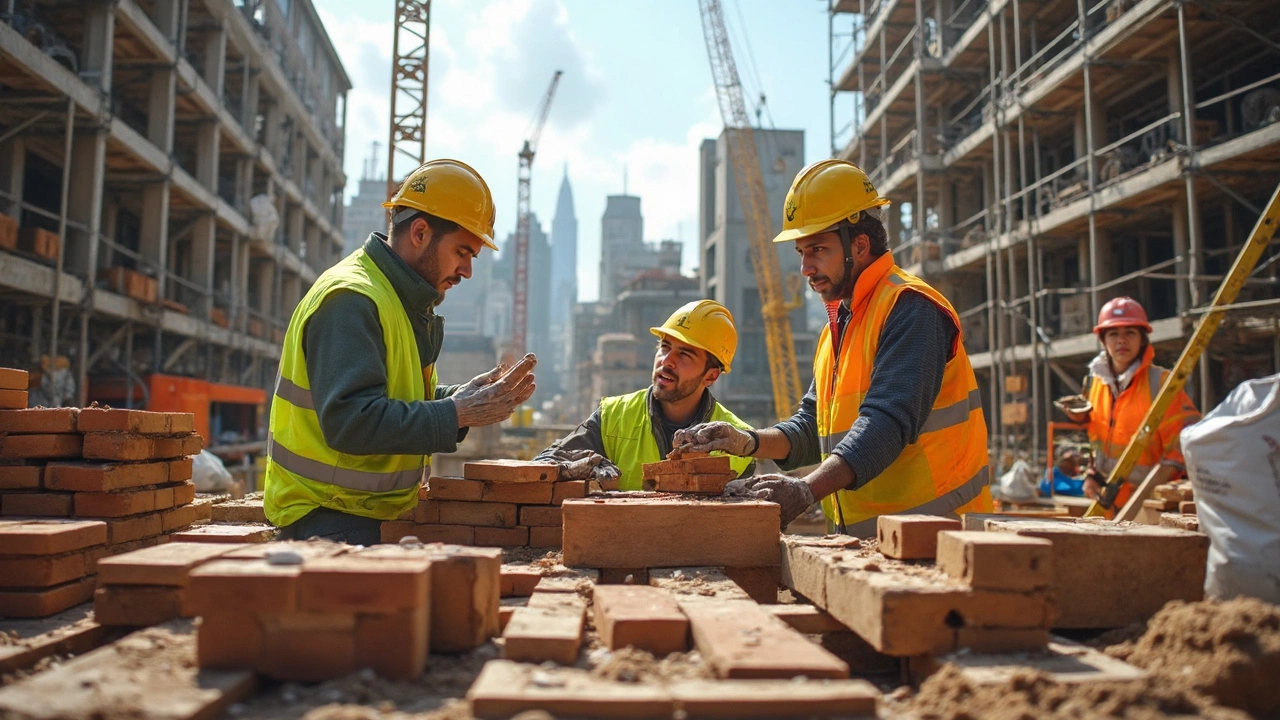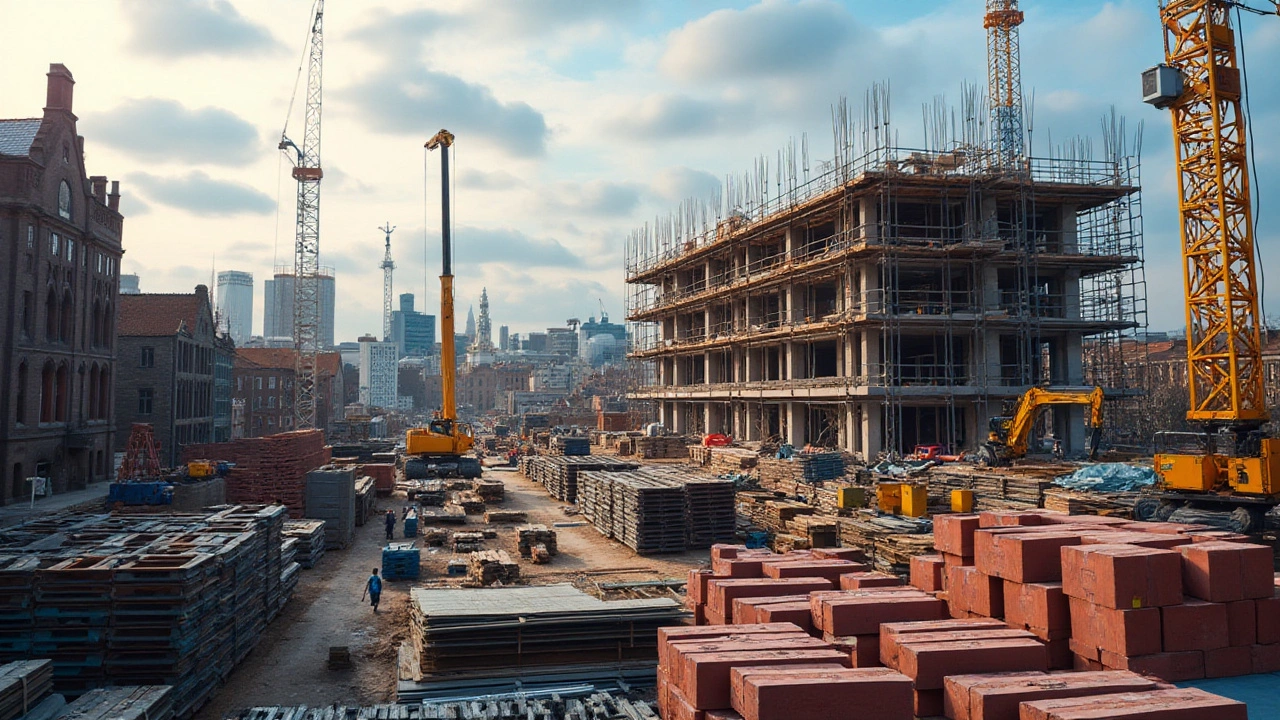Construction Materials: What You Need to Know
Ever wondered why some buildings last for centuries while others crack within years? The secret lies in the materials you pick. From sturdy bricks to modern composites, each choice shapes durability, cost, and look. This guide breaks down the basics so you can pick the right stuff for any project.
Popular Types of Construction Materials
The most common material is brick – cheap, fire‑resistant, and easy to work with. Concrete, made from cement, sand, and gravel, gives strength for foundations. Wood works well for interiors and framing but needs protection from moisture. Steel adds load‑bearing power, especially for large spans. New options like engineered timber and recycled plastic panels bring sustainability into the mix.
Choosing the Right Material for Your Project
Start by asking three questions: How much will it cost? How long should it last? What look do you want? If budget is tight, brick or basic concrete will do. For high‑traffic areas, steel or reinforced concrete offers longevity. When style matters, wood or engineered hardwood gives warmth, while glass and metal create a sleek vibe. Always match material strength to the load it will carry.
Moisture is the silent enemy. Concrete can crack if water gets in, wood can rot, and steel can rust. Using water‑proofing membranes, proper drainage, and breathable paints can keep things dry. In damp climates, consider moisture‑resistant bricks or treated timber. These small steps save you from costly repairs later.
Sustainability is more than a buzzword. Recycled concrete aggregates cut waste, while bamboo grows fast and works for flooring and panels. Metal can be reclaimed from old structures without losing strength. Choosing locally sourced materials also reduces transport emissions and often lowers price. Look for certifications like FSC for wood or BREEAM for whole projects.
Installation matters as much as the material itself. Even the best brick will fail if laid with uneven mortar. Concrete needs proper curing time – rushing can cause cracks. Steel connections must be welded or bolted correctly. If you’re DIY‑inclined, stick to simpler options like interlocking floor tiles or prefabricated panels. For complex jobs, hiring a specialist ensures everything fits and lasts.
Budget planning should include hidden costs. Shipping heavy concrete or steel adds up quickly. Disposal of waste material, especially hazardous ones, can bite. Ask suppliers for all‑in quotes that cover delivery, handling, and waste removal. Sometimes a slightly pricier material saves money in the long run because it needs less maintenance.
When you’ve narrowed down options, request samples. Feel the texture, check the color in natural light, and see how it reacts to water. Compare at least three suppliers – price, warranty, and after‑sales support matter. A solid warranty can be a lifesaver if the material fails unexpectedly.
Bottom line: pick materials that fit your budget, climate, and design goals, protect them from moisture, think about sustainability, and don’t skip proper installation. With these basics, you’ll avoid common pitfalls and build something that stands the test of time.
The Essential Construction Materials: Concrete, Steel, Wood Explained
- Gavin Whitaker
- |
- |
- 0
Curious about the backbone of every building? Discover why concrete, steel, and wood shape everything from skyscrapers to homes, plus maintenance and cost tips.
View more5 Primary Raw Materials in Construction: Key Basics You Need to Know
- Gavin Whitaker
- |
- |
- 0
Wondering what basic materials go into any building project? This article clearly lays out the five core raw materials every construction worker, contractor, or home builder deals with every single day. Cut through the confusion about ingredients, sources, and key uses. You’ll get practical insights, surprising facts, and hands-on tips to help you make smarter choices for your next build or renovation. Perfect if you want to understand why these materials matter and what to keep in mind when selecting them.
View moreUnderstanding Building Materials vs. Construction Materials
- Gavin Whitaker
- |
- |
- 0
While building materials and construction materials might sound like the same thing, they serve different roles in construction. Building materials are the actual stuff you use to put together a structure, like bricks and timber. On the other hand, construction materials include the tools, machines, and equipment that help assemble these structures. Understanding the differences can help builders and homeowners choose the right materials for their projects, ensuring efficiency and durability.
View moreTop 10 Essential Materials in Modern Construction
- Gavin Whitaker
- |
- |
- 0
In the dynamic world of construction, understanding the materials that form the backbone of the industry is crucial. This article highlights the ten most common materials used today, delving into specifics such as their properties, benefits, and applications. From traditional materials like wood and brick to modern innovations like engineered wood and recycled metals, this guide offers valuable insights for anyone involved in the building industry. By exploring these materials, readers can make informed choices that enhance durability, sustainability, and efficiency in construction projects.
View more


